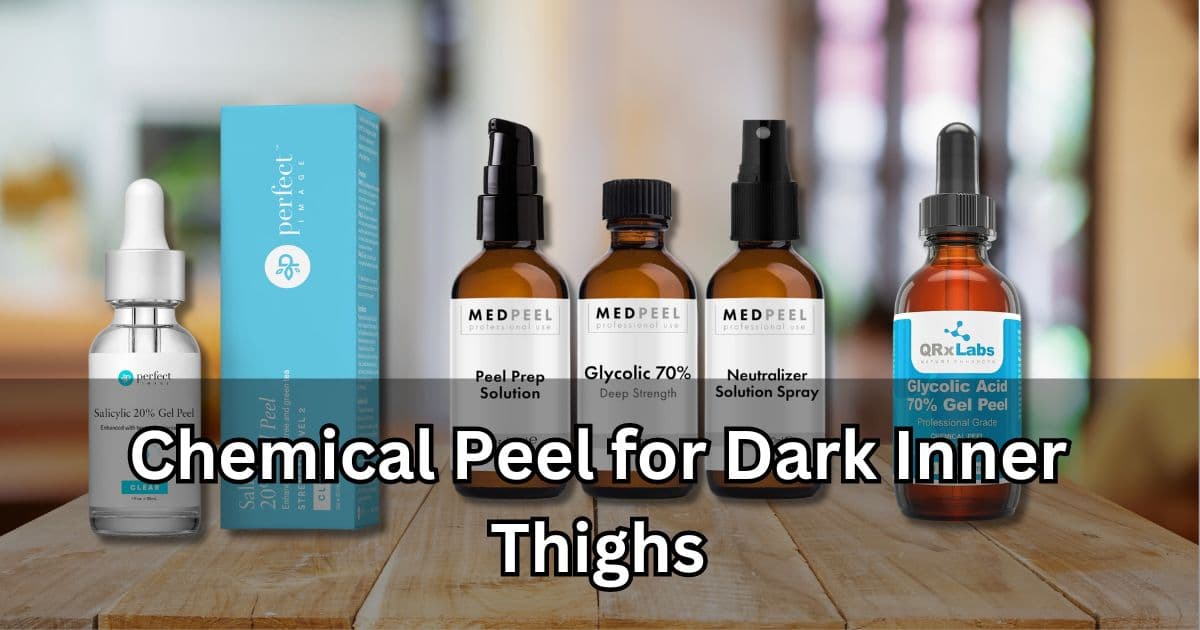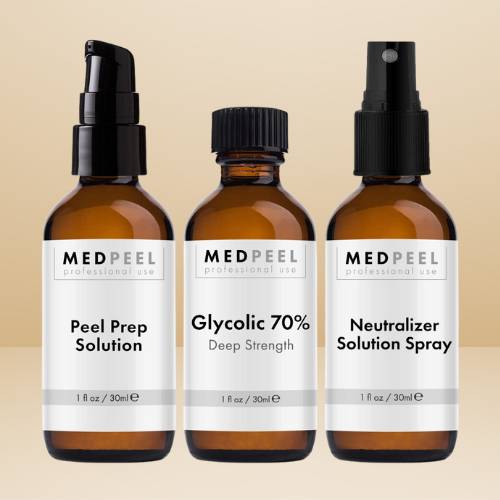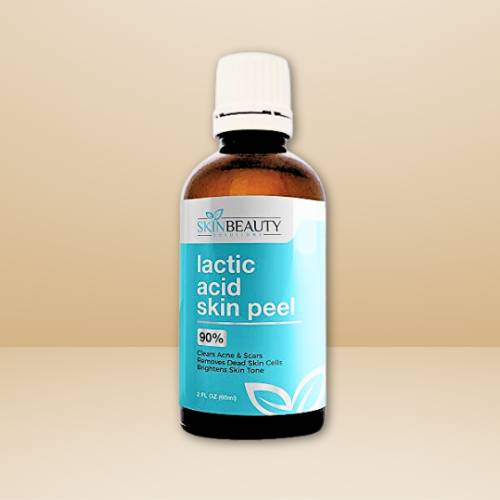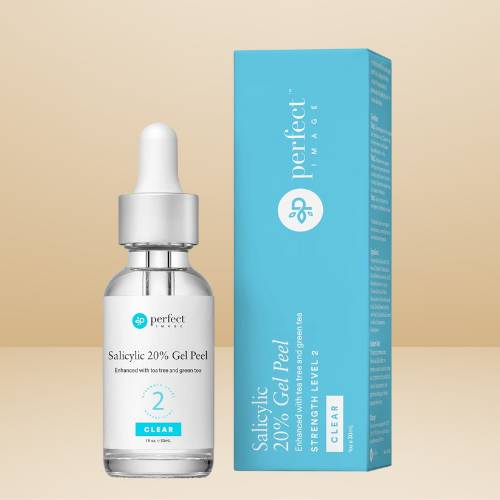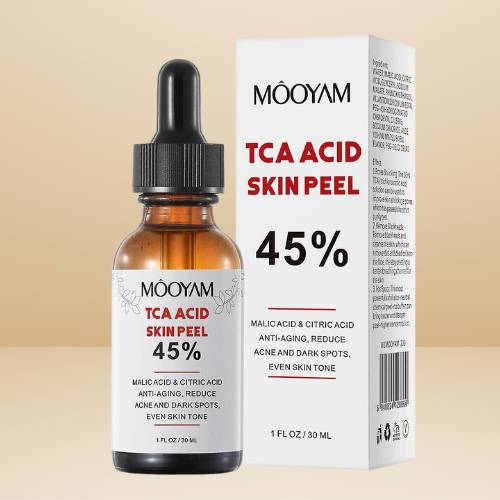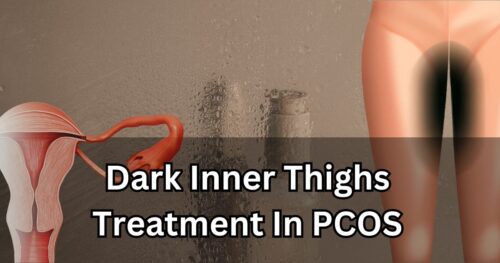Dark inner thighs can be a frustrating beauty concern that many struggle with in silence. Fortunately, there is a simple yet powerful solution: chemical peels. These remarkable treatments have long been hailed as a secret weapon for achieving radiant complexions.
In this article, you will learn about chemical peels for dark inner thighs, exploring the best options available that promise to leave you feeling confident and comfortable in your own skin once again.
Table of Contents
Understanding the issue of dark inner thighs
Causes
Dark inner thighs can be caused by various factors, such as
- Friction between the thighs due to movement or activities
- Hormonal changes during pregnancy or while taking oral contraceptives
- Underlying health conditions like obesity and diabetes
- Genetics
Related: PCOS: Dark Inner Thighs Treatment and Remedies
Having Slightly Darker Inner Thighs Is Mostly Normal
Many people experience darkening of the inner thighs, which can lead to self-consciousness and worry. But here’s the truth: having slightly darker inner thighs is mostly normal and nothing to be overly concerned about.
Variations in skin colour are common and not necessarily indicative of any underlying health issues. However, if you still want a solution for it, there are options available that can help lighten the skin tone.
What Is Chemical Peel Treatment
This skincare treatment involves applying a chemical solution to gently exfoliate the top layer of skin. Doing so helps remove dead cells while stimulating collagen production for brighter and more even-toned skin.
This treatment commonly addresses skin concerns such as acne scars, wrinkles, hyperpigmentation, and uneven texture. It can be performed on different body areas, including the face, neck, hands, and yes – even the inner thighs.
It can lighten this area and give it a more uniform tone to match the surrounding skin.
Benefits of chemical peel treatment
It helps to lighten and even out the skin tone on the inner thighs.
- Reduces hyperpigmentation caused by factors such as friction, chafing, or hormonal changes
- Removes dead skin cells and exfoliates the area, promoting cell turnover and revealing fresher, brighter skin.
- Stimulates collagen production, improving overall skin texture and elasticity
- Minimizes the appearance of blemishes, scars, or stretch marks on the inner thigh area
- Provides a smoother, more even surface
- Prevents ingrown hairs and razor bumps
The procedure: What to expect during treatment
- The peeling process involves the application of a specially formulated chemical solution to the dark inner thighs. This solution typically contains:
- Alpha hydroxy acids (AHAs) like Glycolic acid, Lactic acid and Mandelic acid
- Beta hydroxy acids (BHAs) like Salicylic acid
- Trichloroacetic acid (TCA)
- AHAs are known for their ability to target hyperpigmentation and uneven skin tone. At the same time, BHAs help unclog pores and reduce inflammation.
- Depending on the desired results, different peels can be used – light peels for mild discolouration or deep peels for more stubborn pigmentation.
Preparation before the peel
- Cleanse the area: Start by thoroughly cleansing the inner thighs with a gentle cleanser to remove any dirt, oil, or sweat that may be present. This will ensure that the peel can penetrate the skin effectively.
- Patch test: Before applying any chemical peel product to your inner thighs, conduct a patch test on a small skin area. This will help determine if you have any unknown allergies or sensitivities and avoid potentially harmful reactions.
By following these preparation steps before undergoing a chemical peel for dark inner thighs, you can maximize its effectiveness while minimizing potential risks.
The actual peel process
Note: Only use chemical peel after consultation with a dermatologist or authentic aesthetician.
- Apply the chemical solution evenly across the cleansed dark inner thighs using a brush or cotton pad.
- A superficial peel (most peels available online are superficial) is typically left on the skin for 10-15 min, while a medium or deep peel may be left on for up to 30 minutes.
- Avoid sensitive genital areas.
- Once applied, you may experience a mild tingling or stinging sensation, which is usually temporary.
- After some time, clean it with warm water or a cleanser.
- After cleaning, it’s common to experience some redness, dryness, and flaking in the treated area as part of the healing process.
- Avoid picking at any flaking skin to prevent scarring or infection.
Multiple sessions may be required depending on individual circumstances and goals.
| Peel Type | Frequency | Ideal Total Sessions | Application Time | Main Points |
|---|---|---|---|---|
| Glycolic Acid Peel | Once a month | 6-7 | 5-15 min | – Not recommended for dark skin tones |
| Lactic Acid Peel | Every 3-4 Weeks | 6-7 | 10-15 min | – Can sting or irritate a bit |
| Mandelic Acid Peel | Every 2-3 Weeks | 5-6 | 10-15 min | – Suitable for sensitive skin – Gentle |
| Salicylic Acid Peel | 2 Weeks | 6-8 | 5-10 min | – Deeply cleans the skin |
| TCA Peel | Every 2-4 Weeks | 5-6 | 10-15 min | – Reduces signs of skin aging and pigmentation |
Aftercare tips for optimal results
During your recovery period, you may experience some peeling or flaking of your skin. This is entirely normal and part of the natural exfoliation process.
Avoid picking or scratching at any loose or peeling skin, as it can lead to scarring or infection. Instead, gently wash your skin with a mild cleanser and pat dry with a soft towel.
Post-peel skincare routine
- Avoid Direct Sunlight: The treated skin will be more sensitive to the sun’s rays, so it’s crucial to avoid prolonged sun exposure and wear sunscreen with at least SPF 30.
- Keep the Treated Area Clean: Clean the skin with a mild cleanser. Avoid using harsh exfoliants or scrubbing vigorously, as this can irritate the skin.
- Moisturize Regularly: Apply a gentle, non-comedogenic moisturizer. CeraVe daily moisturizing lotion is an all-around great option.
Risks and Considerations Before Undergoing Treatment
Skin Type
It’s important to note that not everyone is a suitable candidate for chemical peels.
Certain factors such as pregnancy or breastfeeding, active infections or cold sores on the treatment area, sunburned or susceptible skin, recent use of certain medications like Accutane, and a history of skin conditions like eczema or rosacea may make someone ineligible for a chemical peel.
Choosing a Qualified Dermatologist
Before undergoing the procedure, it is crucial to consult with a qualified dermatologist or aesthetician who can assess your skin type and determine the appropriate strength and type of chemical peel.
They will also provide you with detailed instructions on how to prepare for the procedure, which may include avoiding certain skincare products or medications in the days leading up to it.
Side effects
Potential Side Effects of a Chemical Peel Can Include
- Redness
- Swelling
- Peeling
- Temporary changes in skin colour
You may experience some tingling or mild discomfort during the procedure.
However, these side effects are typically mild and subside within a few days to a week.
Cost Considerations
The cost varies depending on several factors, including the clinic’s location and the practitioner’s expertise.
Chemical peel is not a one-time fix. Multiple sessions may be required to achieve optimal results, which means you should factor in both the initial expense and potential additional costs.
Cheaper options aren’t always better. Choosing a reputable provider who uses high-quality products and has extensive experience can help ensure safe and satisfactory results.
You can save recurring costs by consulting once with a professional and then carefully doing it yourself afterwards.
Recommended Peels – Best Chemical Peels for Dark Inner Thighs
QRxLabs Glycolic Acid 70% Gel Peel
MedPeel Glycolic Acid 70% Essential Peel Kit
Skin beauty solution LACTIC Acid Peel 90%
Perfect Image Salicylic 20% Gel Peel
MOOYAM TCA Peel
The Ordinary Peeling Solution for Dark Inner Thighs
The Ordinary AHA 30% + BHA 2% Peeling Solution is a powerhouse which contains many useful ingredients. It is a combination peel. Combination peels are used to get better results because each ingredient has its own anti-pigmentation method.
Some key ingredients are:
- Glycolic Acid
- Salicylic Acid
- Lactic Acid
- Tartaric Acid
- Citric Acid
- Glycerin
- Hyaluronic acid
- Pro-vitamin B5
AHAs and BHAs work in different ways and mechanisms to provide the ultimate skin-darkening solution.
It also takes care of dryness and irritation with the help of glycerin, hyaluronic acid, and Pro-vitamin B5.
Alternative Treatments for Dark Inner Thighs
Laser therapy: This non-invasive procedure uses focused light energy to target and break down excess melanin in the skin, reducing pigmentation and evening out skin tone.
Topical creams or serums are specifically formulated to lighten dark areas of the skin. These products typically contain ingredients like niacinamide, kojic acid, or arbutin, which work to block the production of melanin and fade hyperpigmentation.
It is important to note that these treatments may take several weeks or even months to show noticeable results, so patience and consistency are key.
Exfoliation can also help improve the appearance of dark inner thighs. Regularly using a gentle scrub or exfoliating brush can slough off dead skin cells and promote cell turnover, revealing fresher and brighter skin.
It is essential to be gentle and avoid harsh scrubbing, as this can irritate the delicate skin in that area. Instead, opt for a mild exfoliant or a natural ingredient like oatmeal or sugar mixed with a moisturizing agent such as honey or coconut oil.
Home Remedies: Home remedies such as applying lemon juice, aloe vera gel, or yoghurt to the dark areas may help lighten them gradually.
Other Dermatological Procedures: Consult with a dermatologist for procedures like microdermabrasion or microneedling, which can improve skin texture and tone over time.
Conclusion: Achieving brighter, more confident inner thighs
In conclusion, a chemical peel can be an effective solution for lightening dark inner thighs. The procedure involves the application of a chemical solution to the skin, which exfoliates the outer layer and promotes cell turnover. This helps to fade hyperpigmentation and reveal brighter, more even-toned skin.
However, it is essential to consult with a dermatologist before undergoing this treatment, as they can assess your specific needs and recommend the appropriate course of action.
Additionally, it is crucial to follow post-treatment instructions like using SPF, moisturizing, and cleansing.

